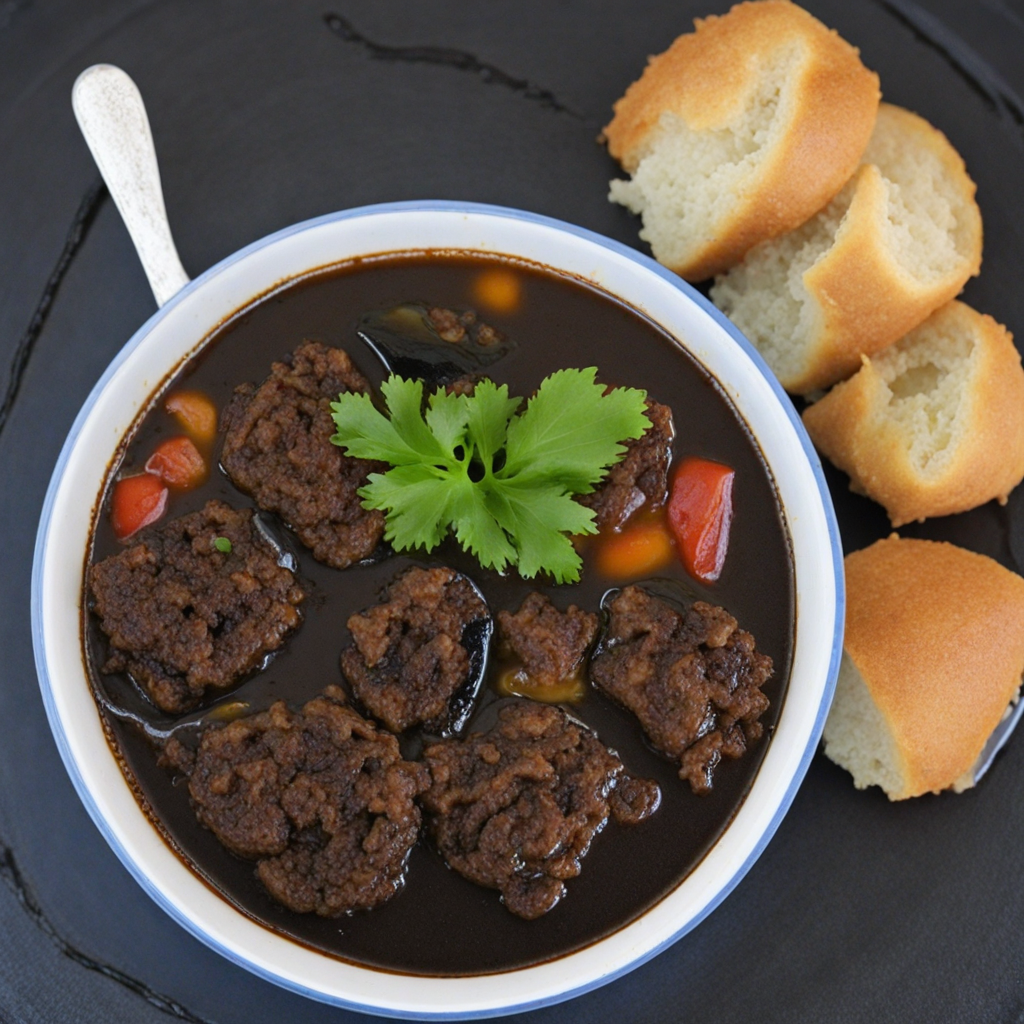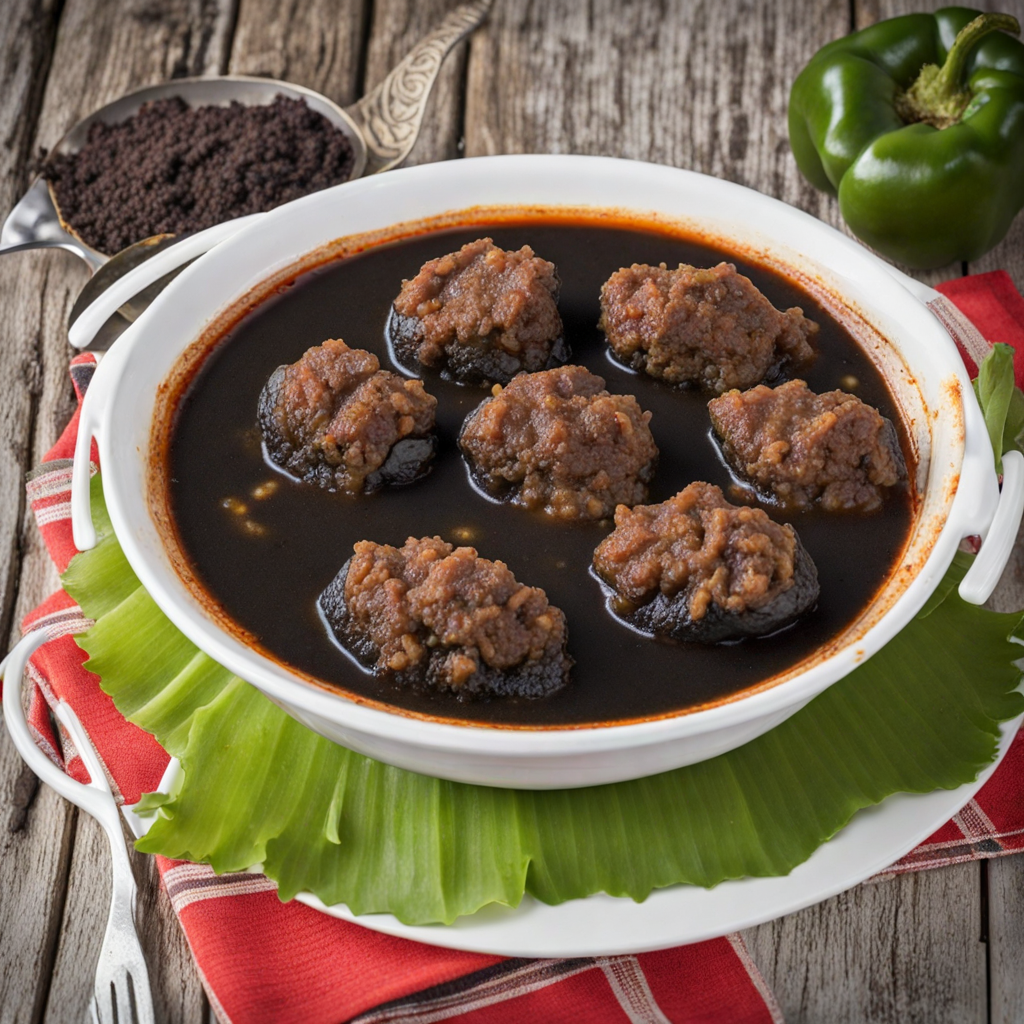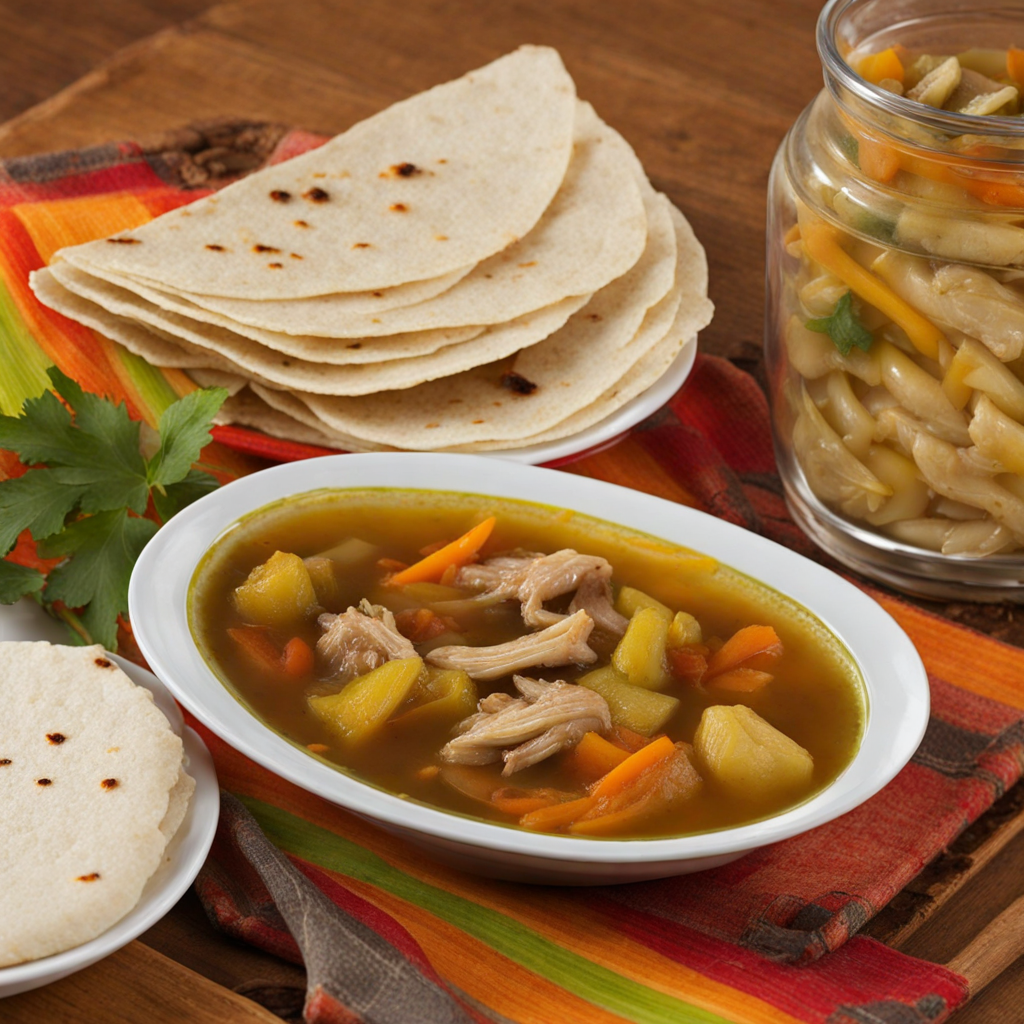Relleno Negro
Relleno Negro is a traditional Belizean dish that delivers a unique and bold flavor experience, showcasing the rich culinary heritage of the country. This dish typically features a tender chicken or turkey that is seasoned with a distinctive blend of spices and then stuffed with a vibrant filling made from black recado sauce. The recado itself is a dark, rich paste made from roasted spices, tomatoes, and the essential black pepper known as "pimiento." As the meat is slow-cooked, it absorbs the deep flavors of the sauce, resulting in a succulent, savory dish that is both hearty and comforting. One of the standout features of Relleno Negro is its striking appearance. The dish is often served in a dark, glossy sauce that contrasts beautifully with the bright colors of accompanying sides such as rice and beans or fried plantains. The visual appeal is matched by the complex flavor profile, where the earthy tones of the recado meld with the natural flavors of the poultry. The dish is typically garnished with fresh herbs or slices of avocado, adding a refreshing touch that complements the richness of the filling. As you take your first bite of Relleno Negro, you'll experience a symphony of flavors that dance on your palate. The smoky undertones from the roasted spices, combined with the savory depth of the meat and the slight sweetness of the sauce, create a taste that is distinctly Belizean. This dish is often enjoyed during festive occasions and family gatherings, making it not just a meal, but a celebration of Belize's diverse culinary landscape and cultural traditions.
How It Became This Dish
Relleno Negro: A Culinary Journey through Belize #### Origins Relleno Negro, a rich and flavorful dish from Belize, is emblematic of the country’s diverse cultural tapestry. Its name translates to “black filling,” a nod to its distinctive appearance and the ingredients that imbue it with depth and character. The dish is traditionally made from turkey or chicken stuffed with a mixture that includes black recado—a spice paste made primarily from roasted black chili peppers, garlic, and spices. The origins of Relleno Negro can be traced back to the Mayan civilization, which inhabited the region long before European contact. The Mayans utilized local ingredients, including turkey, which was domesticated by them. The introduction of spices and techniques by the Spanish during colonization further enriched the culinary landscape of Belize. The blending of these indigenous practices with Spanish culinary influences laid the groundwork for what would become Relleno Negro. #### Cultural Significance Relleno Negro is more than just a dish; it is a symbol of family and community in Belize. Often prepared for special occasions such as Christmas, weddings, and other significant celebrations, it embodies the spirit of togetherness. The act of making Relleno Negro is typically a communal effort, where family members gather to prepare the dish, sharing stories and laughter, thereby reinforcing familial bonds. In Belizean society, food plays a pivotal role in cultural identity. Relleno Negro is often served alongside traditional sides such as rice and beans and is accompanied by tamales or corn tortillas. This meal reflects the diverse influences that have shaped Belizean cuisine, encompassing elements from Caribbean, African, and European traditions. The dish also represents the resilience of the Belizean people. Throughout history, Belize has been a melting pot of cultures due to its colonial past and the migration of various ethnic groups. This cultural exchange is evident in the culinary realm, where Relleno Negro stands as a testament to the blending of flavors, techniques, and traditions. #### Development Over Time The preparation of Relleno Negro has evolved over the years while retaining its core components. In its earliest iterations, the dish was made solely with turkey or chicken, but as ingredients became more accessible, variations emerged. Today, cooks might incorporate a blend of meats or even vegetarian fillings for those who prefer plant-based diets, reflecting contemporary dietary trends. The black recado, a defining element of Relleno Negro, has its own history. Originally, the recado was a way to preserve meats and enhance flavors. The art of roasting and grinding spices was passed down through generations, and today, many families have their unique recipes that reflect personal touches or secrets. The use of local ingredients, such as the native black chili peppers known as “xcatik,” adds a distinctly Belizean flavor that cannot be replicated elsewhere. In the late 20th century, as globalization increased and Belizean culture gained recognition, Relleno Negro began to gain popularity beyond the borders of the country. Tourists and expatriates developed a taste for this unique dish, and it started appearing on menus in restaurants, both locally and internationally. This exposure led to a resurgence of interest in traditional Belizean cuisine, prompting chefs to explore the flavors of their heritage. Today, Relleno Negro is celebrated in culinary festivals throughout Belize, where chefs showcase their interpretations of the dish. These events serve not only as a platform for culinary innovation but also as a means of preserving Belizean heritage. The dish has transitioned from a home-cooked family favorite to a culinary ambassador for Belizean culture, connecting locals and tourists alike through a shared appreciation of its flavors. #### The Ingredients and Preparation The preparation of Relleno Negro is an art form in itself. The key ingredient, black recado, is essential for achieving the dish's characteristic flavor. To make this paste, dried black chili peppers are roasted over an open flame until they are charred, then blended with garlic, cumin, and other spices. This mixture is not only used as a stuffing but also as a marinade for the meat, imparting a deep, smoky flavor. The meat is often prepared by deboning and marinating it in the black recado, which infuses the turkey or chicken with a rich taste. Once marinated, the meat is stuffed with a mixture of recado, vegetables, and sometimes nuts, then wrapped in banana leaves and slow-cooked. This method of cooking allows the flavors to meld beautifully, resulting in a tender, succulent dish. Relleno Negro is typically served during festive occasions, where it is often the centerpiece of the meal. Accompanying dishes, such as rice and beans, complement the rich flavors of the filling, while fresh salsas and pickled vegetables provide a refreshing contrast. #### Conclusion Relleno Negro is a dish steeped in history and cultural significance, embodying the essence of Belizean identity. Its journey from ancient Mayan kitchens to modern Belizean tables showcases the resilience and adaptability of culinary traditions. As Belize continues to evolve, so too does Relleno Negro, serving as a reminder of the importance of community, family, and the rich tapestry of flavors that define Belize’s culinary heritage. Through Relleno Negro, one can taste not only the unique spices of Belize but also the stories of its people—stories of migration, adaptation, and a celebration of life. In every bite, there is a connection to the past, a reverence for tradition, and an anticipation of future culinary innovations. As Belize's culture continues to flourish, Relleno Negro remains a delicious emblem of its vibrant history and enduring spirit.
You may like
Discover local flavors from Belize







